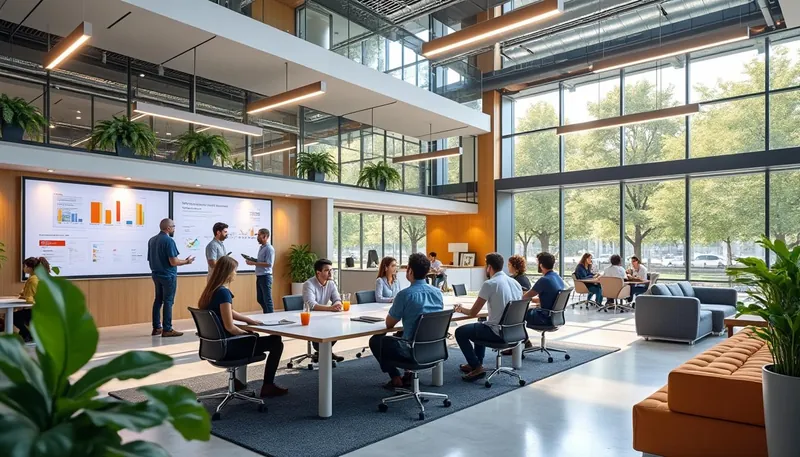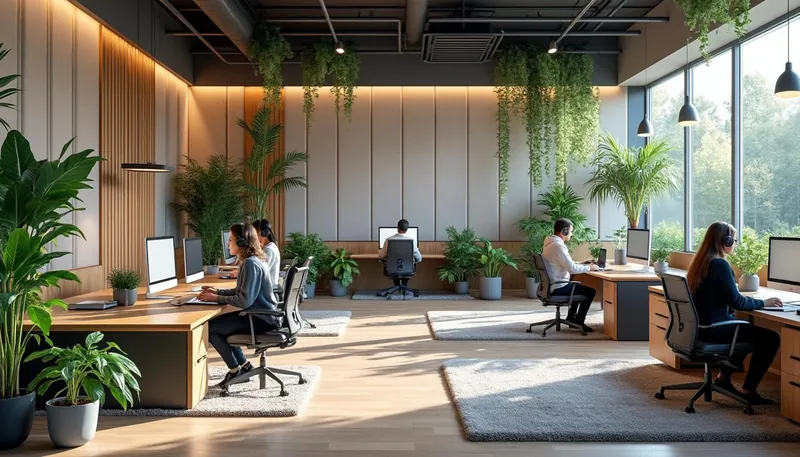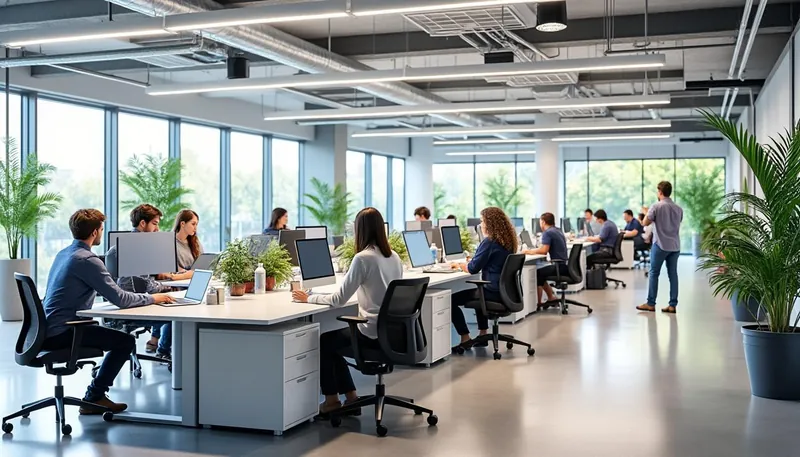In an era where adaptability and innovation are no longer optional, ensuring your office layout can keep pace with team growth has become crucial. The traditional office space, often thought of as a fixed arrangement of desks and chairs, is quickly becoming obsolete. Instead, businesses are starting to recognize the importance of creating environments that evolve alongside their workforce, fostering collaboration and enhancing productivity. The key to achieving this is through a well-planned office layout that accommodates both current needs and future expansions. Gone are the days when companies could settle for a one-size-fits-all solution; today’s dynamic work environments demand flexibility, inclusivity, and a people-centric approach.
As we move towards 2025, establishing a thoughtful workplace strategy isn’t just about physical space anymore. It’s about understanding the diverse needs of employees and the technological advancements that support them. Companies such as Steelcase and Herman Miller are pioneering designs that prioritize employee wellbeing and efficiency, integrating adaptable furniture and smart technology into their layouts. Whether it’s creating flexible collaboration areas or designated zones for focused work, the design must resonate with the team’s culture and work styles. The question remains: how can organizations start to future-proof their office layouts to support consistent growth and foster a thriving work environment?
- Understanding the necessity of agile workspaces.
- Identifying critical zones within office layouts.
- The role of adaptable furniture in office designs.
- Incorporating tech-driven planning into designs.
- Prioritizing wellness in spatial design.
These are the central themes that will shape the future of workspaces. As we dive deeper into each aspect, we’ll uncover how a proactive approach to office design can lead to significant benefits such as attracting top talent, enhancing collaboration, and ensuring employee satisfaction.
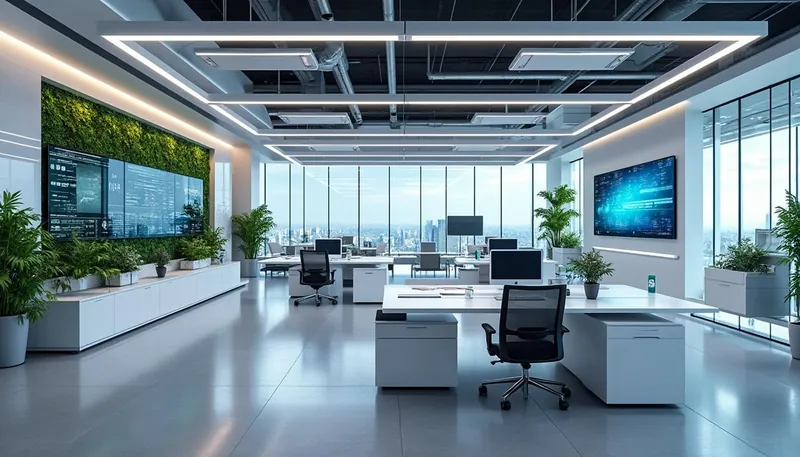
Understanding Agile Workspaces for 2025
Creating an agile workspace isn’t merely a design trend but a fundamental strategy for growth. Companies must realize that an agile office layout facilitates seamless transitions between various work modes. Imagine a scenario where a team needs to brainstorm urgently; instead of being confined to a rigid meeting room, they can transform an open space into a collaborative hive. Here are some key characteristics of an agile workspace:
- Rapid reconfiguration: Furniture should be movable, permitting quick setup changes according to immediate needs.
- Versatile areas: Designated spots for focus, collaboration, and relaxation must coexist, providing employees with options based on their tasks.
- Integrated technology: Ensure tech access is available without causing disruption, allowing smooth workflow transitions.
To illustrate, consider a modern space designed by WeWork. Their flexible office environments allow businesses to scale easily, providing modular spaces that can be tailored for specific projects or team sizes. This adaptability significantly enhances productivity, as teams can create the perfect environment for their immediate needs without significant downtime.
The implications of an agile workspace extend into diverse areas, such as enhancing employee satisfaction and encouraging a collaborative culture. By integrating adaptability into design, companies won’t just retain talent; they’ll cultivate a sense of community and innovation that propels the business forward.
| Characteristics | Benefits |
|---|---|
| Movable Furniture | Allows quick reconfiguration of spaces 🎉 |
| Multiple Function Zones | Caters to various working styles and moods 🔄 |
| Integrated Technology | Streamlines workflows across different tasks 💻 |
Identifying Core Zones in Office Layouts
For an office to be genuinely effective, it must be structured around strategic zones to cater to specific activities. A layout that accommodates various work styles helps employees engage and perform at their best. Here are the four core zones to consider in modern office design:
- Focus Zones: Quiet areas such as booths or pods for deep work, enabling concentration without distractions.
- Collaboration Zones: Open and inviting spaces for team interactions, ideal for brainstorming and feedback sessions.
- Flex Zones: Multi-purpose areas that can serve various functions like events, town halls, or informal gatherings.
- Recharge Zones: Relaxing spaces designed for breaks or downtime, including cafés, nooks, and wellness areas.
Putting this into practice, companies leveraging Space Planning services from firms like CBRE are redefining their layouts to include these zones, promoting a state of dynamic fluidity. Employees no longer have to suffer through tedious transitions between different tasks, such as moving from a collaborative meeting into solo work.
Moreover, intentional design choices create clear boundaries between different zones, ensuring a logical flow throughout the space. This design philosophy draws inspiration from organizations like Knoll, where careful attention is paid to spatial arrangement to prevent bottlenecks and enhance overall office harmony.
| Core Zones | Primary Function | Example Features |
|---|---|---|
| Focus Zones | Deep work areas | Soundproof booths, quiet corners 🔇 |
| Collaboration Zones | Team brainstorming | Open tables, creative blackboards 🤝 |
| Flex Zones | Events & activities | Movable furniture, vibrant arts 🎨 |
| Recharge Zones | Relaxation & wellness | Cafés, lounge chairs ☕️ |
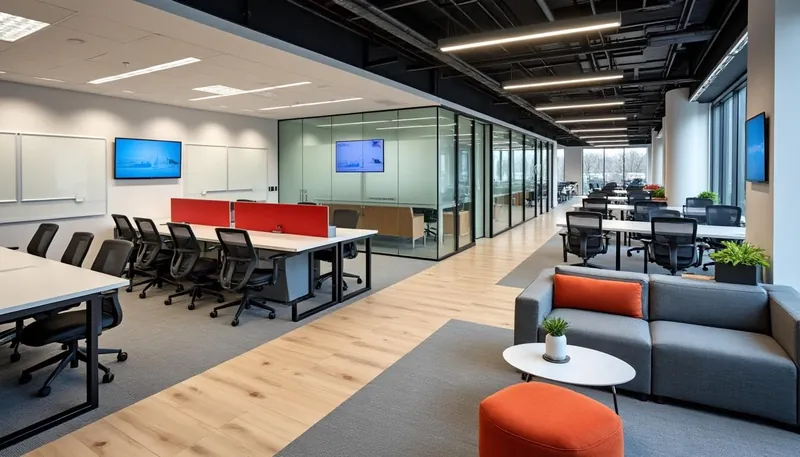
The Superpower of Adaptable Furniture
Among the most critical components of a future-proof office layout is the choice of furniture. Moving away from traditional, fixed units to adaptable pieces enhances overall design flexibility. In this evolving work environment, furniture should not only be functional but also versatile. Here are some features to look for:
- Modular Units: Desks and chairs that can be easily rearranged or adjusted to suit different needs.
- Stackable Options: Furniture that can be stored compactly when not in use, freeing up space for a variety of functions.
- Mobile Solutions: Items on wheels or with adjustable heights make transitioning between styles seamless.
Brands like Haworth and Allsteel are leading the way by providing innovative solutions that blend ergonomic support with adaptability. For instance, IKEA offers an array of stylish, flexible designs that cater to the needs of startups and established companies alike, ensuring that spaces can grow and shift as teams evolve.
Ultimately, when selecting furniture, the guiding principle has to be that it serves the workforce, promoting a comfortable and productive environment. All elements—ranging from workstations to collaborative tables—should work together to facilitate an agile work culture.
| Furniture Feature | Benefits | Examples |
|---|---|---|
| Modular Units | Customizability | Adjustable desks, interchangeable seating. |
| Stackable Options | Efficient storage | Compact chairs, foldable tables. |
| Mobile Solutions | Easy reconfiguration | On-wheels conference tables. |
Incorporating Technology in Space Planning
In today’s technologically driven world, integrating smart solutions in office layouts is essential. As companies aim to future-proof their designs, the use of technology must play an integral role in functional planning. Here are key considerations for tech-driven office designs:
- IoT Sensors: These can monitor space usage in real-time, providing insights that help inform layout decisions.
- AI Analytics: Understanding how teams utilize spaces can guide better decision-making regarding furniture arrangements and additional resources.
- Smart Booking Systems: Implementing systems that allow teams to book spaces quickly ensures efficient use of all zones.
Taking advantage of data isn’t just about optimizing space—it’s about creating an environment that adapts to the team’s needs. Companies such as Office Depot are already implementing AI technology to predict busy hours or identify underused areas, allowing for timely adjustments to layouts or furniture configurations.
As we proceed towards more sophisticated tech solutions, relying on data-driven decision-making can transform traditional layouts into future-ready ecosystems that respond to real-world demands. After all, organizations don’t just need spaces; they need environments that nurture their workforce and foster creativity.
| Technology Feature | Impact | Example Implementation |
|---|---|---|
| IoT Sensors | Real-time space monitoring | Understanding peak usage times ⏰ |
| AI Analytics | Data-informed decisions | Guiding resource allocations 📈 |
| Smart Booking | Efficient use of spaces | Streamlined reservations for team rooms 📅 |
Prioritizing Wellness in Office Design
The wellbeing of employees has surged to the forefront in workplace design. As organizations recognize that happy and healthy employees are more productive, incorporating wellness into office layouts is vital. Here’s how companies can focus on wellness:
- Intuitive Circulation: Design pathways that promote easy movement, avoiding congestion and fatigue.
- Active Seating Options: Provide desks that enable sit-stand transitions and comfortable seating arrangements.
- Wellness Areas: Intentional spaces like nap pods or meditation corners should be incorporated into the design.
Consider the example of a major tech firm that integrated wellness zones into their layout, providing employees with places to unwind during breaks. Research shows that the mere presence of these spaces can significantly decrease stress levels and improve overall morale.
With organizations like Haworth leading initiatives in workplace wellness, the implication is clear: enhancing employee wellbeing not only fosters loyalty but directly impacts productivity and innovation. By investing in wellness-oriented layouts, companies can build environments where employees are motivated to perform at their best.
| Wellness Strategy | Desired Outcomes | Examples |
|---|---|---|
| Pathways Design | Reduced fatigue | Clear paths allowing for easy mobility 🚶♂️ |
| Active Seating | Enhanced comfort | Sit-stand desks, ergonomic chairs 🪑 |
| Dedicated Wellness Areas | Lower stress levels | Quiet rooms for meditation or relaxation 🧘♀️ |
What is an agile workspace?
An agile workspace allows for quick reconfiguration to meet changing needs and encourages flexibility in work styles.
How can I incorporate technology into my office layout?
Implement IoT, smart booking systems, and AI analytics to make better use of space and improve productivity.
Why is employee wellbeing important in office design?
Prioritizing wellbeing leads to happier and more engaged employees, which directly impacts productivity and retention rates.
What are the core zones of a modern office layout?
Core zones include focus areas, collaborative spaces, flexible zones, and recharge areas, each serving a specific purpose to enhance workflow.
How can I future-proof my office space?
Create a flexible, people-centric environment that incorporates adaptable furniture and technology to accommodate changing needs.
